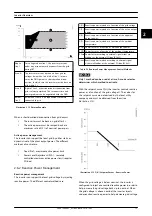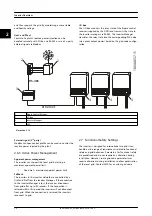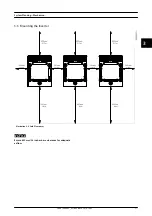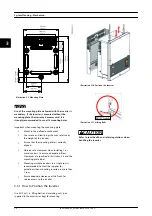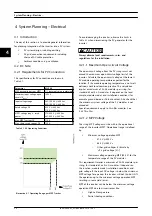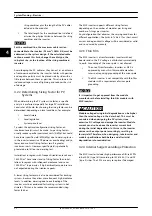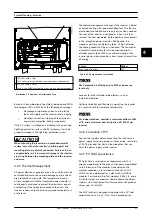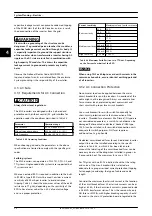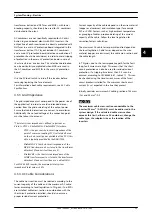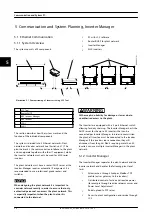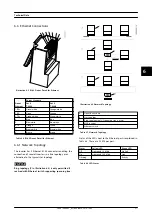
transformer station, and D0 fuses and MCBs, with lower
breaking capacity, should only be used for AC combiners
distributed in the plant.
AC combiners are not specifically required for AC distri-
bution in ground-based plants with MLX inverters: the
output line of each inverter can be directly protected with
NH fuses in a main LV protection board integrated in the
transformer station. If AC layout includes AC combiners
and a main LV protection board, selective coordination of
protection should be considered, in order to avoid tripping
of protection in the main LV protection board in case of
short circuit in an inverter line. This selective coordination
can be particularly complicated when MCBs are used in
the AC combiner and MCCBs in the main LV protection
board.
Use the PV load switch to turn off the inverter before
removing/replacing the fuse elements.
For information about cable requirements, see
.
4.3.3 Grid Impedance
The grid impedance must correspond to the power size of
the application* in order to avoid unintended discon-
nection from the grid or derating of the output power.
Ensure that cable dimensions are correct, to avoid losses.
Additionally the no load voltage at the connection point
must be taken into account.
*The total system impedance is defined in per cent as:
Ztotal = ZPCC + Ztra ZtrafoLVMV [%], where:
-
ZPCC is the per cent short-circuit impedance of the
point of common coupling (PCC) calculated based
on the short-circuit power available at the PCC (this
data is typically provided by the DNO/TSO),
-
ZtrafoMVHV is the short-circuit impedance of the
MV/HV transformer unit as stated in the transformer
datasheet (if non-existent then use 0),
-
ZtrafoLVMV is the short-circuit impedance of the
LV/MV transformer unit as stated in the transformer
datasheet (if non-existent then use a default 6%).
For MLX 60 kVA inverter, the maximum total system
impedance Ztotal value is 30%.
4.3.4 AC Cable Considerations
The cable cross-section must be selected according to the
current capacity of the cable and the maximum AC cable
losses according to local legislation. In TN grids, if no RCDs
are installed, cable cross-section in combination with the
short-circuit protection installed, should also ensure a
proper residual current protection.
Current capacity of the cable depends on the wire material
(copper or aluminium) and insulation type (for example
PVC or XLPE). Factors, such as high ambient temperature
or grouping of cables, produce derating of the current
capacity of the cable. Follow the local legislation for
correction factors calculation.
The maximum AC cable losses permitted also depend on
the local legislation. Cable losses depend on the wire
material (copper or aluminium), the cable cross-section and
the cable length.
In TN grids, due to the low impedance path for the fault
loop, fault currents are high. This means that the short-
circuit protection can also be used for residual current
protection, if a tripping time lower than 0.4 s can be
ensured, according to IEC 60364-4-41, table 41.1. This can
be checked using the time/current curves of the fuses/
circuit breakers installed for the minimum short-circuit
current (I
sc,min
) expected in the line they protect.
Initially consider a minimum AC cabling section of 35 mm
2
(Cu) and 50 mm
2
(Al).
NOTICE
The maximum cable cross-section connectable to the
inverter (95 mm
2
/ AWG 4/0) must be addressed in the
system design. If the calculated cable cross-section
exceeds this limit, either use AC combiners, change the
cable type, the subplant size or the location of the
inverters.
System Planning – Electrica...
L00410648-02_02 / Rev. date: 2014-10-03
25
4
4



